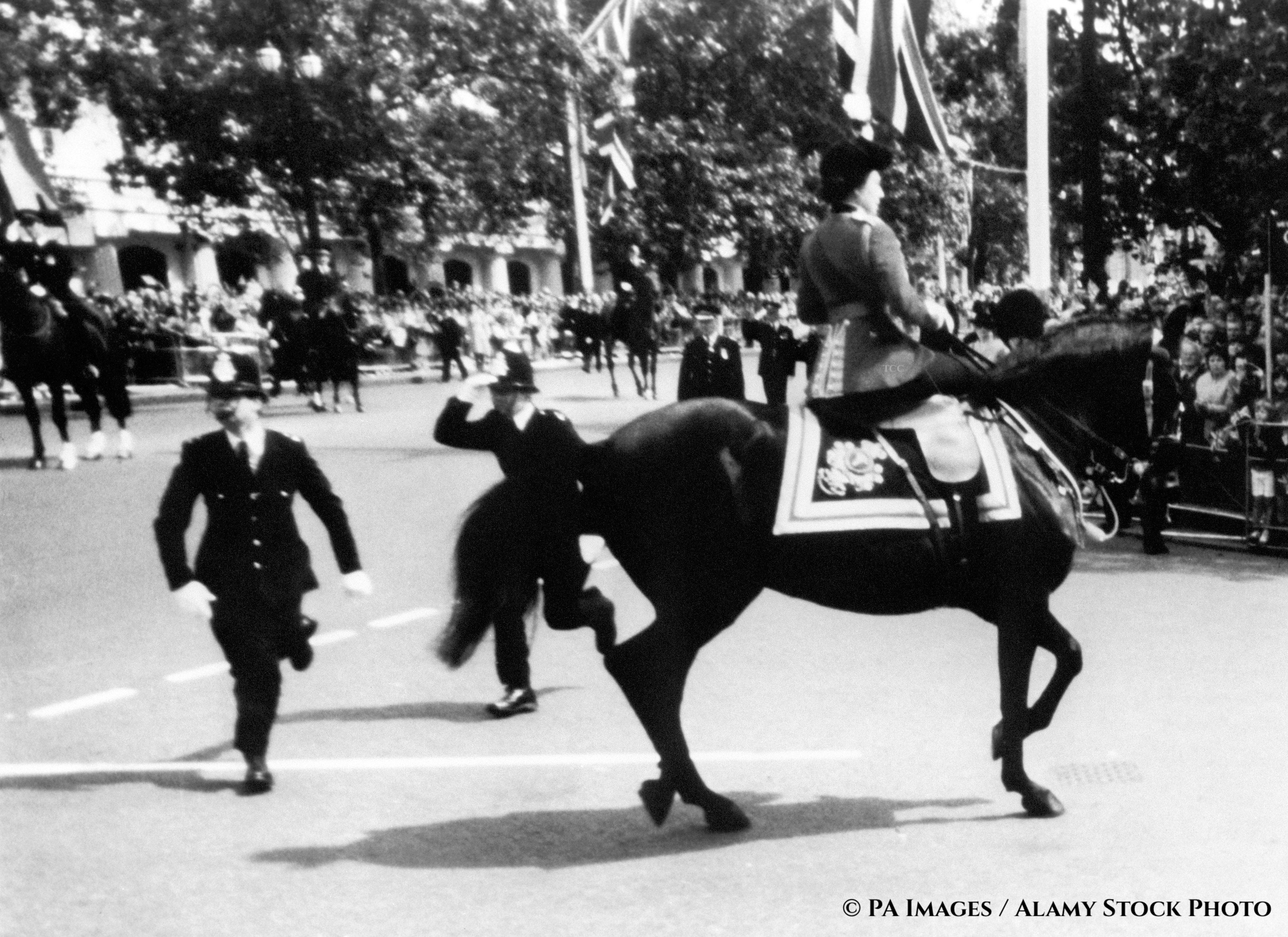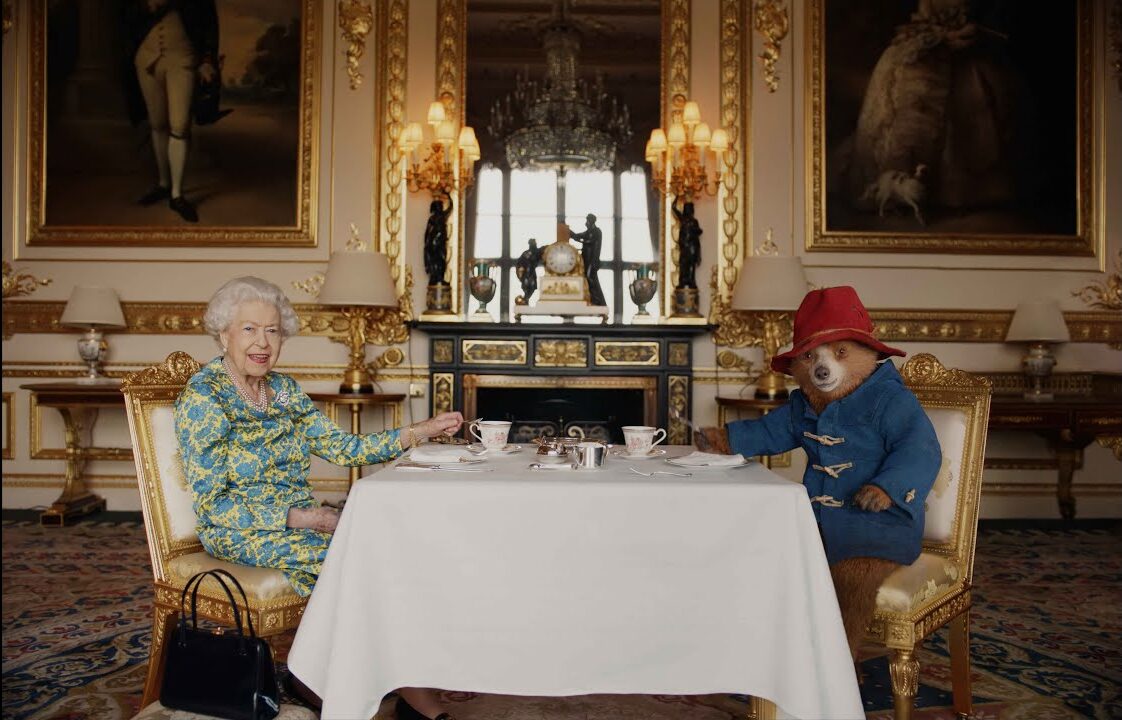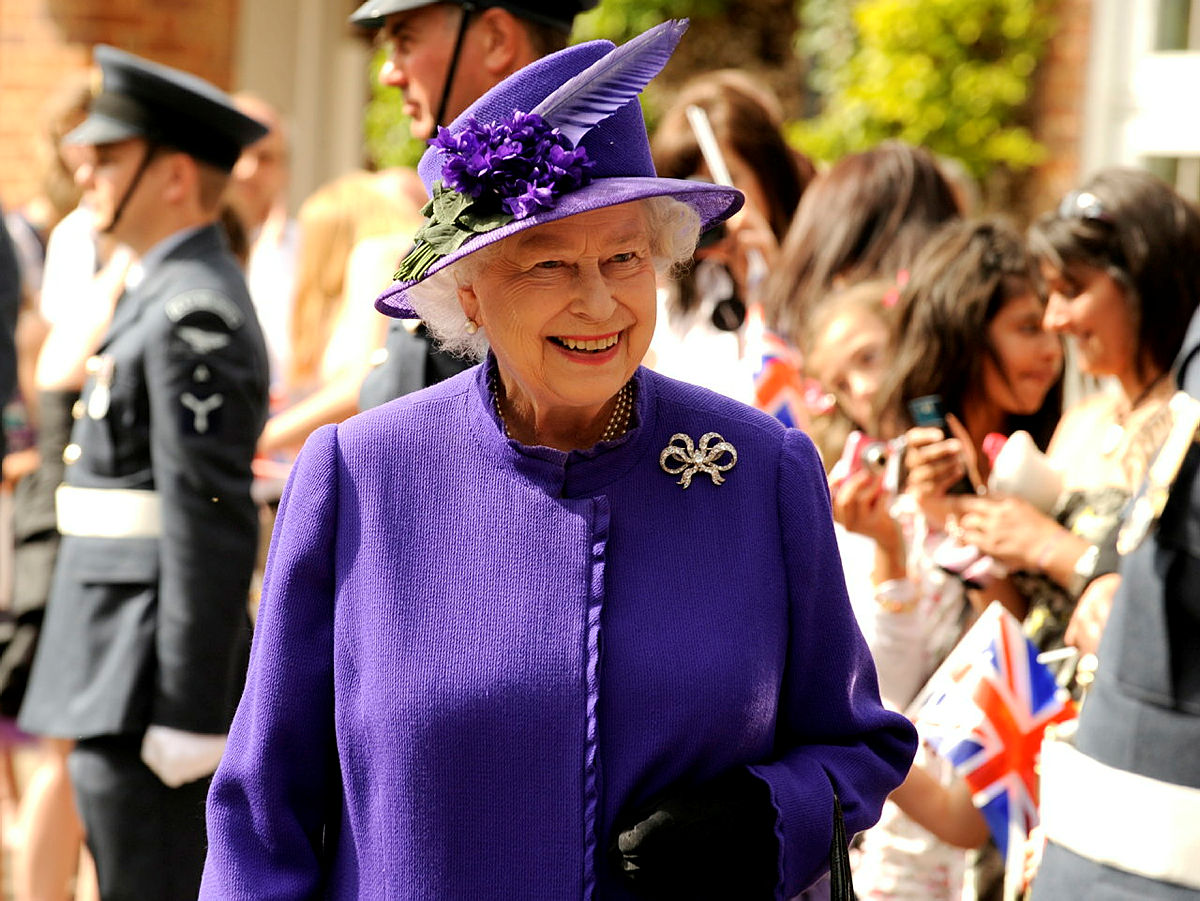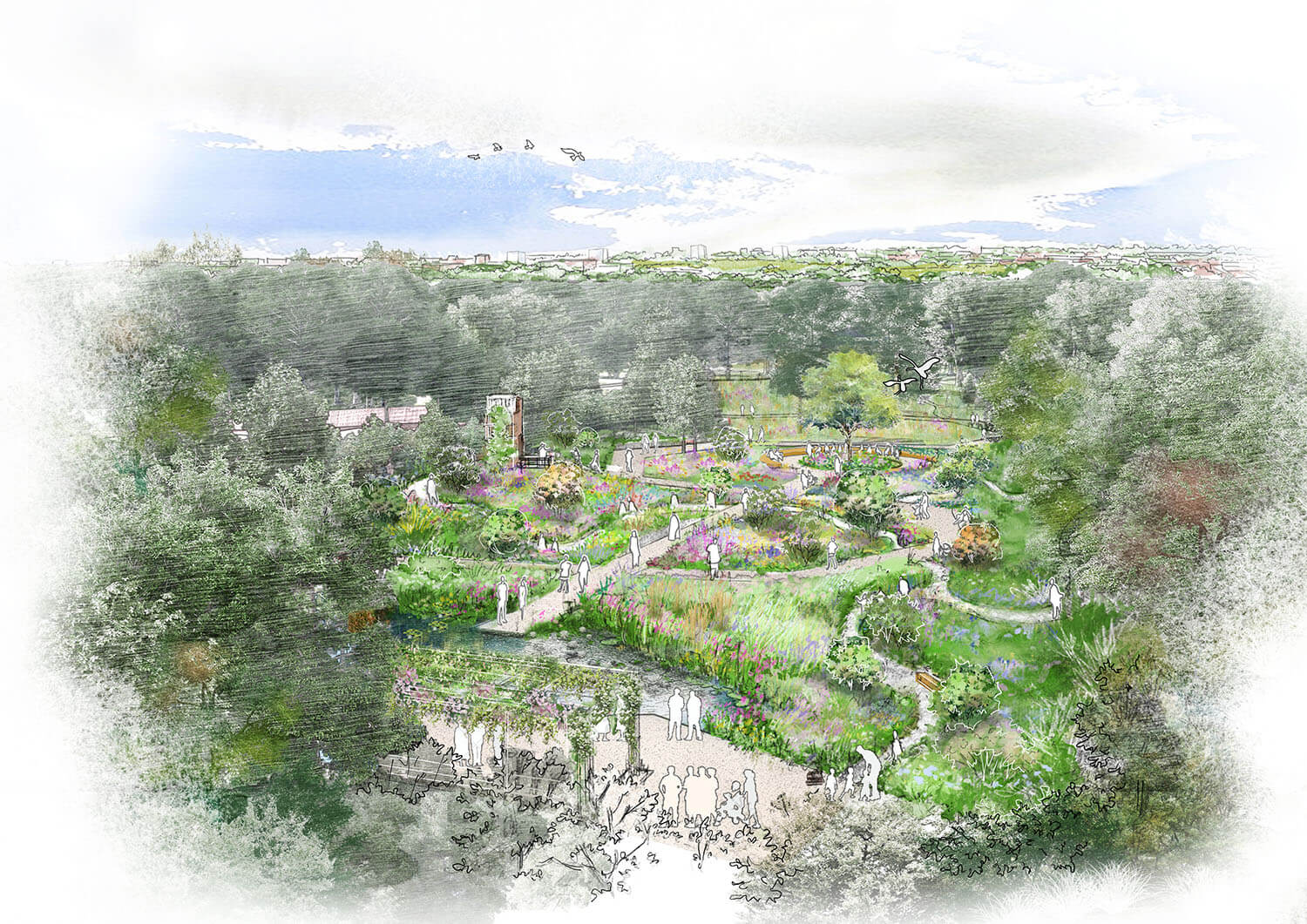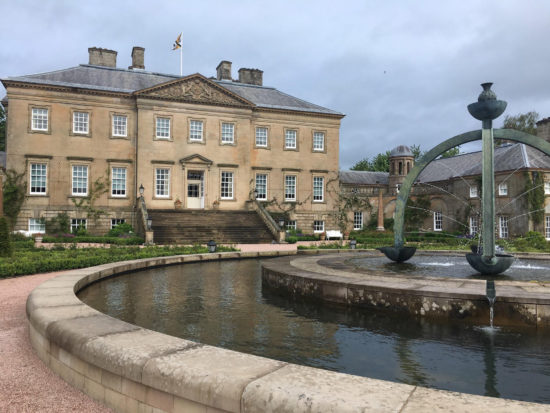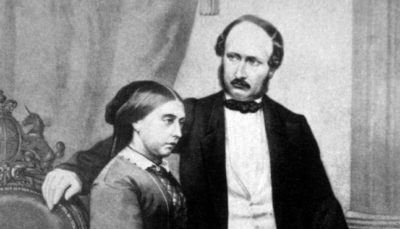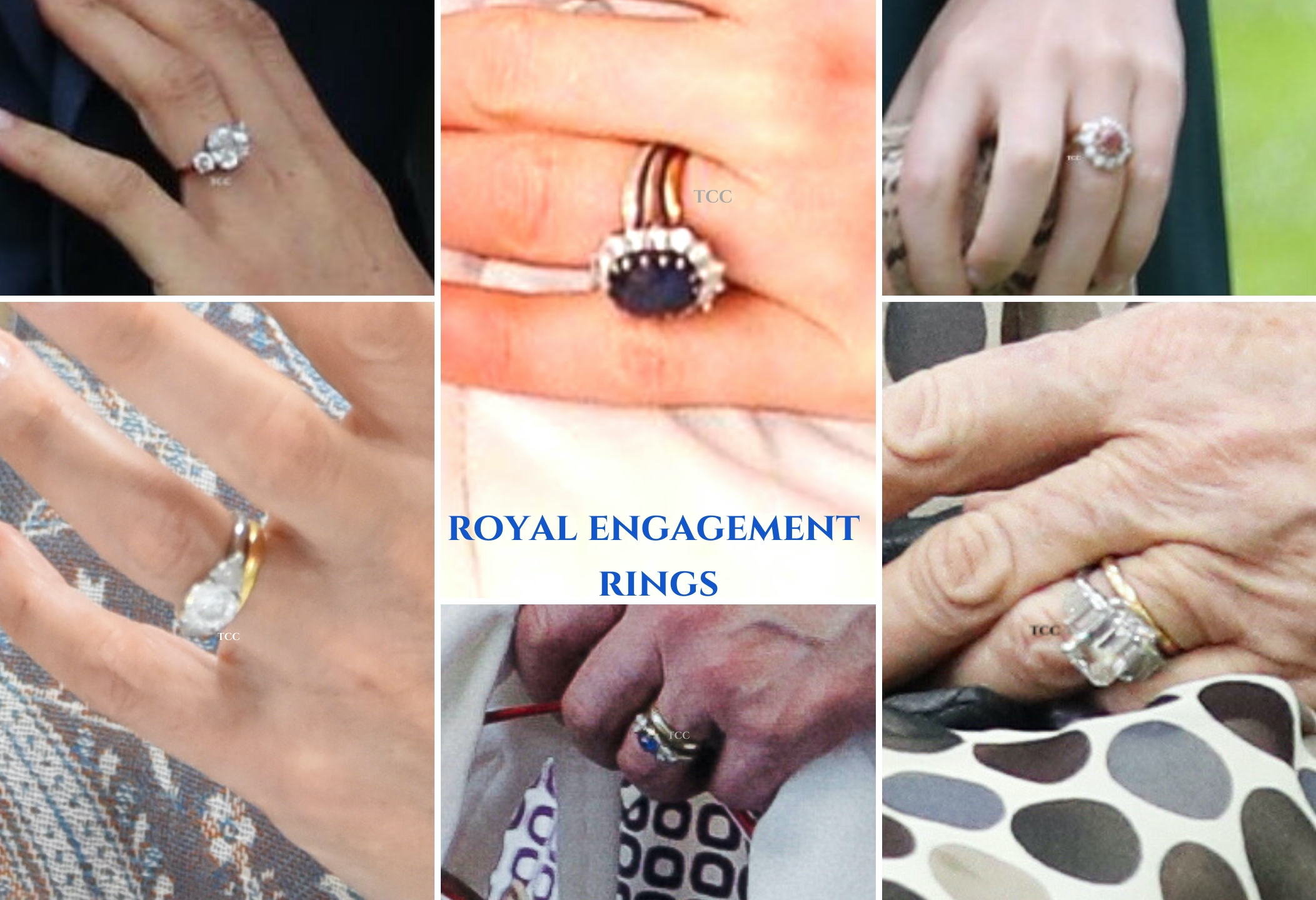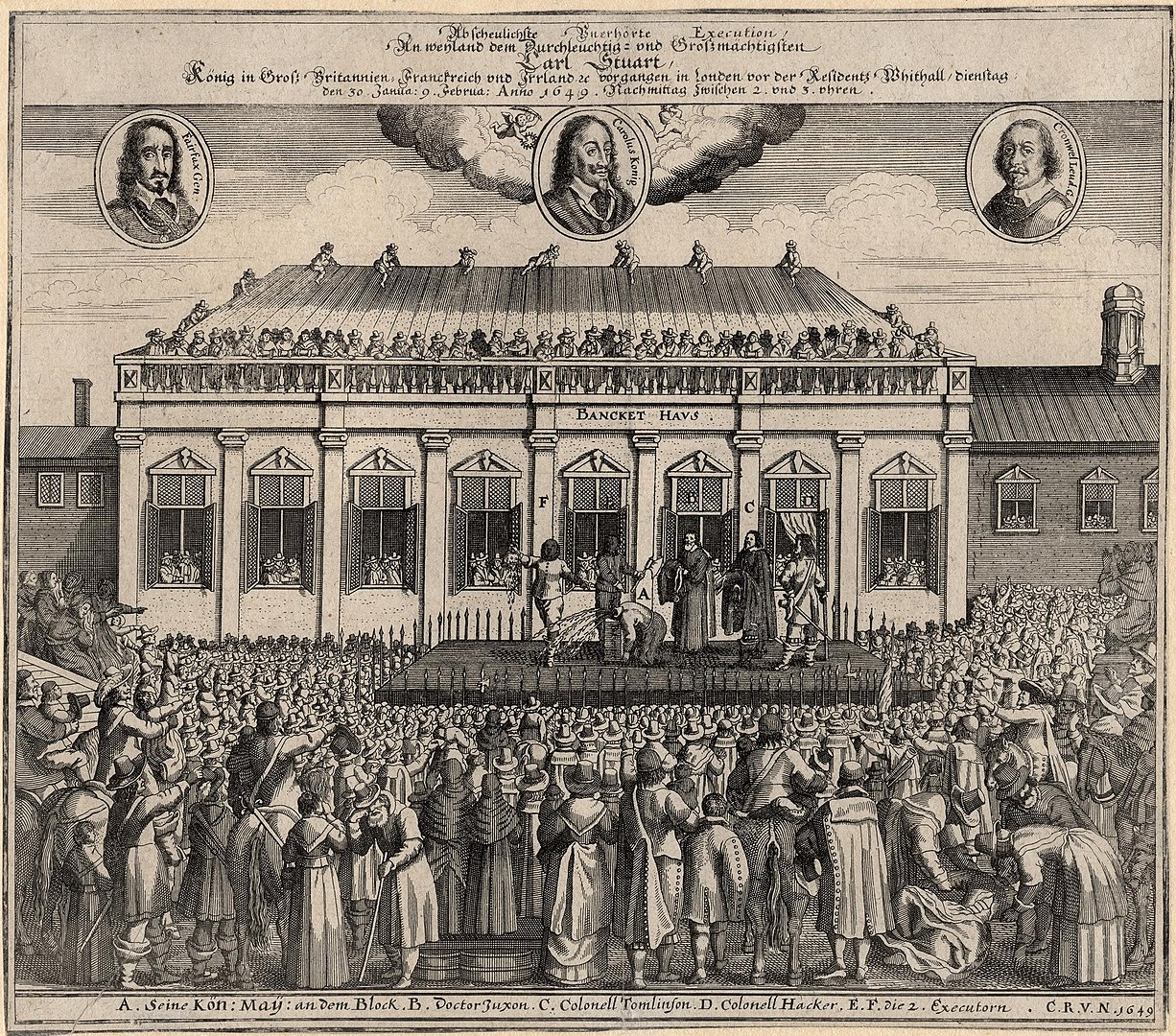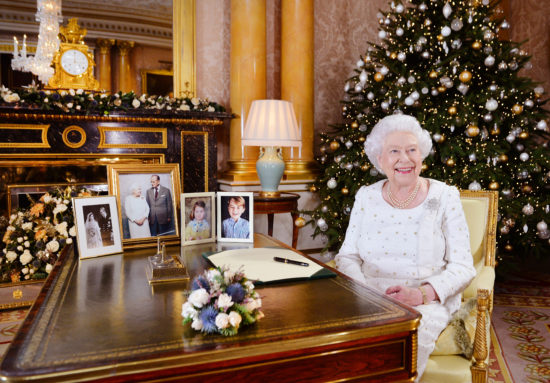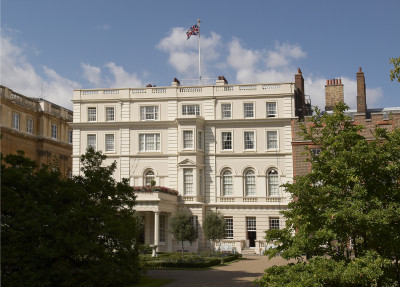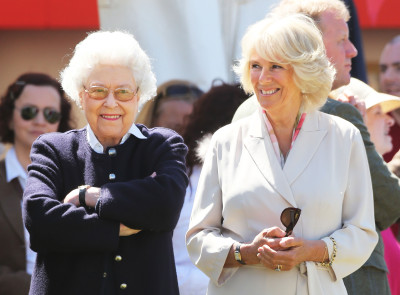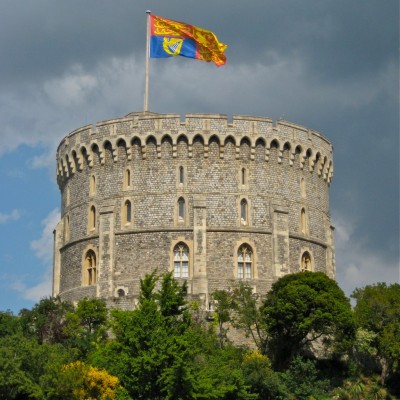Millions of us tuned into the BBC’s much heralded ‘The Coronation’ last evening to see The Queen in conversation with royal expert, Alastair Bruce, discussing the centuries old rituals of the Coronation ceremony – but what new insights did the programme give us into the ceremony itself and The Queen’s reflections of it?
This year marks the 65th anniversary of The Queen’s coronation at Westminster Abbey in June 1953. No one under the age of 70 will have clear recollections of the occasion, and so who better to share a personal insight into how the day unfolded than the principal participant herself?
The Crown Jewels
During the course of the programme we were given a detailed explanation of the Crown Jewels and the Coronation regalia, their history, symbolism and the parts they play in the Coronation ceremony – the format of which has remained largely unchanged since the Anglo Saxon period, over 1,000 years ago.
The centre pieces of the Crown Jewels are the two crowns that are used in the ceremony – St Edward’s Crown and the Imperial State Crown.
There are only three people allowed to touch the St Edward’s Crown – the Crown Jeweller, the Archbishop of Canterbury and The Queen herself.
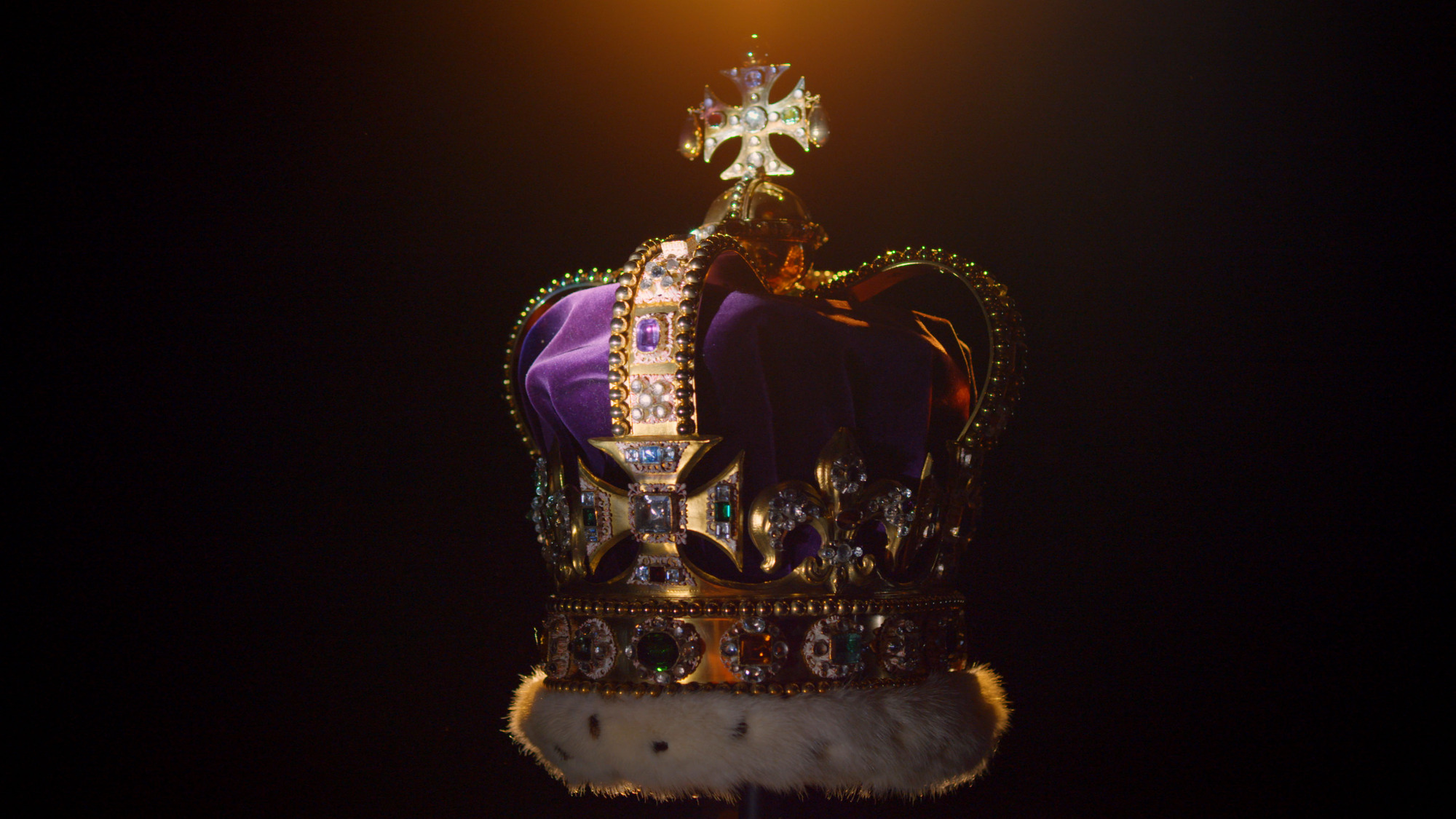
St Edward’s Crown featured in the documentary © Royal Collection Trust/ Her Majesty Queen Elizabeth II 2018 – Photographer: Atlantic Productions
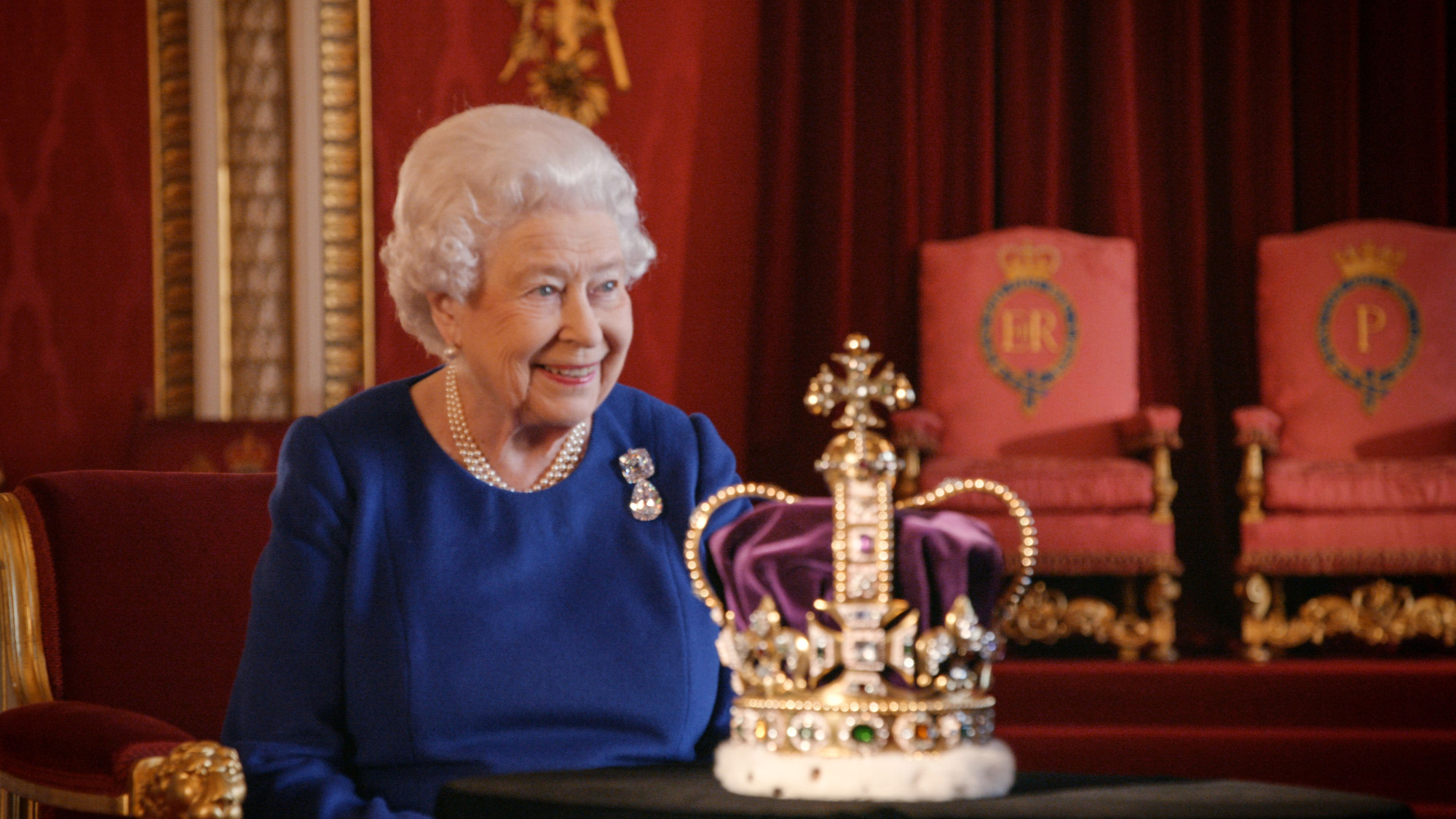
The Queen with the St Edward’s Crown.The Queen – (C) © Royal Collection Trust/ Her Majesty Queen Elizabeth II 2018
For the programme, the two crowns were transported from their home in the Tower of London to Buckingham Palace and we saw the Crown Jeweller taking out an unassuming plain wooden box, which when opened revealed to contain the most stunningly bejewelled crown there has ever been.
St Edward’s crown was made in 1661 for the Coronation of Charles II whose Coronation not only marked the beginning of his reign, but also the restoration of the Monarchy which ended with the execution of his father Charles I at the conclusion of the English Civil War in 1649. For 11 years, England had been ruled as a Commonwealth under Oliver Cromwell, during which time the previous Crown Jewels had been destroyed.
This new piece was called St Edward’s Crown as it was made to replace the one supposedly worn by Edward the Confessor at his Coronation in 1042. Encrusted with 440 precious and semi precious stones and a frame of solid gold it weighs five pounds.
Amazingly, this was the first time The Queen had been reunited with the crown since her Coronation. The Monarch clearly has a memory for its weight, as when it was placed in front of her during the programme, she asked: “Is it still as heavy?” and then reaching to lift the crown remarked: “Yes it is – it weighs a ton!” and chuckled: “It’s very solid isn’t it?” as she continued to prod at the priceless regalia, which people on social media seemed to love.
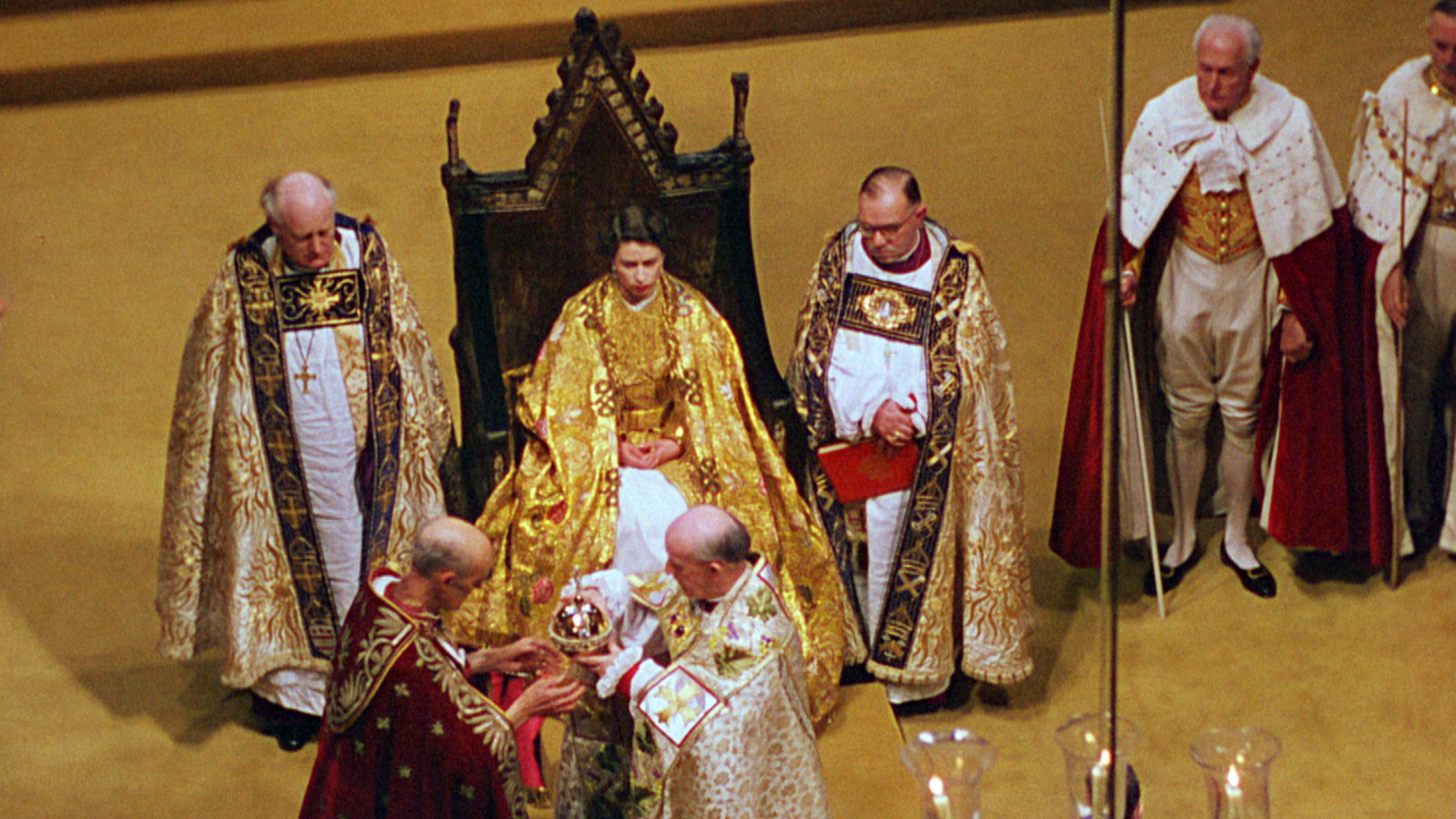
The Queen seated during the coronation. Her Majesty The Queen – (C) ITV Archive
Confirming that “Thank goodness” she hadn’t seen the crown since her Coronation, The Queen was making the most of this opportunity and gave the crown a great deal of inspection and scrutiny: “It is impossible to tell which is front and back – it’s identical I think”, she told Bruce.
The second crown used during the Coronation is the diamond-encrusted Imperial State Crown – with which the Sovereign is much more familiar as it has remained in regular use during her reign, worn to the State Opening of Parliament. It was also worn by Her Majesty to exit the Abbey after being crowned.

The Queen wears the imperial state crown after the coronation. Her Majesty The Queen – (C) ITV Archive – Photographer: ITV Archive
Taking the opportunity to take a much closer look at the crown than perhaps she does when wearing it at Parliament openings, Her Majesty remarked: “You see it’s much smaller isn’t it?”
Agreeing with Alistair Bruce about how the diamonds make the crown so heavy, the Monarch commented: “Fortunately my father and I have about much the same shaped head, once you put it on it stays…you can’t look down to read the speech, you have to put the speech up – because of you did your neck would break or it would fall off!
The Queen continued with a broad smile: “So there are some disadvantages to crowns, but otherwise they are quite important things.”
“There are some disadvantages to crowns, but otherwise they’re quite important things,” the Queen has said after giving a rare glimpse into the perilous business of wearing the Crown Jewelshttps://t.co/v6bqWo5qr1 pic.twitter.com/hlzZ2wmqIf
— The Telegraph (@Telegraph) January 12, 2018
Alistair Bruce then asked the Crown Jeweller if he would move the crown closer to The Queen for her inspection, at which point the Monarch simply made a grab for it and exclaimed: “This is what I do when I wear it!” Revolving the crown around with a beaming smile she asked: “Can I look at this end? I like the Black Prince’s ruby.”
We then learned that the ‘ruby’ is actually a semi-precious spinel, mined in Afghanistan and said to have been worn by Henry V at the Battle of Agincourt in 1415. Legend says that he placed a feather in a hole drilled into the ruby and mounted it on his helmet as he rode into battle.
“It’s fun to see I think”, Elizabeth said. “The idea that his plume is put into stone – a bit rash but that’s the sort of thing they did I suppose in those days.”
That remark was the first The Queen made during the programme that indicated her no nonsense attitude.
We are used now to seeing the younger Royals like William and Harry giving regular interviews to the media, in their modern, relaxed, just-call-me-Harry style, that one can be lulled into thinking that is how the Monarchy now is. However, personal insights on camera with The Queen like this are so rare, that one can forget that she is still very much tradition of Monarchy, she is 91-years-old – she is The Queen! This no fuss, no nonsense approach is what has made her long reign so successful.
Returning to the Imperial State crown, we were told that two of the four pearls that hang from it were said to have belonged to Mary Queen of Scots and acquired by her rival Elizabeth I.
Peering at them, the Sovereign told Bruce: “They were meant to be Queen Elizabeth’s earnings, but they are not very happy now.” Clearly an authority on the subject and an owner of some of the most stunning sets of pearls ever produced, she continued: “Most pearls like to be living creatures, they have just been hanging out here for years, it’s rather sad, they don’t look very happy.”
Rocking the crown back and forth she said: “The trouble is pearls are sort of live things and they need warming.”
It bears a 104 carat sapphire known as the Stuart sapphire. Inspecting it in another shot, The Queen remarks: “It’s pale, but never mind it’s extremely useful as it tells one which is the back and which is the front.”
Bruce asks: “Comfortable ma’am?”
“No!” she exclaims smiling, “Nothing like that is comfortable.”
Later in the programme, it was revealed for the first time what steps were taken to protect the Crown Jewels during the Second World War, to prevent them falling into the hands of the Nazis, should an invasion of Britain been successful.
A librarian at Windsor Castle has recently uncovered letters that reveal the Jewels were secretly hidden in a chamber 60 feet below that castle. The correspondence tells that some key jewels were prised from their settings and placed in a biscuit tin! This made them even easier to be spirited away to another secret location, had the Nazis invaded and moved in on the castle.
Revealing the details of this story to The Queen for the first time, Bruce tells the Monarch that the librarian gouged the principle jewels out of the Crown Jewels, wrapped them up, put them into a jar and then placed them into a Bath Oliver tin.
Looking distinctly unimpressed by this revelation, The Queen asked Bruce: “Did he remember where he put them? Because he might have died in the middle.”
Staring ahead, The Queen is clearly imagining what dreadful fate might have occurred had the librarian met an untimely end and the secret of the hidden jewels followed him to the grave. Bruce reassured her: “I think the King was told ma’am”.
Coronation of George VI
Bruce then escorted Elizabeth II to sit in front of a large screen, where they sat watching footage of her father’s coronation in 1937. The Monarch was just 11-years-old when her father, George VI, was crowned in 1937 – but she remarked that her memories of his coronation were much more vivid than her own, as she wasn’t taking part: “I had nothing to do!”
The footage showed the Archbishop of Canterbury taking hold of St Edward’s Crown ready to place it on the King’s head, and we learnt that a piece of cotton had been tied to the front of the crown so that the Archbishop would know which way to place it. The footage showed him frantically turning the crown around as he tried to locate the thread which had disappeared. Eventually the crowning took place without the King ever knowing whether it had been placed on the correct way round or not.
Bruce remarked to The Queen that he believed the King was not ‘best pleased’ by the incident; giving an insight into what conversations the Royal family must have had following the event, the Queen curtly responded: “No, he wasn’t!”
Determined that his daughter’s coronation would run more smoothly her father asked Princess Elizabeth to write down everything she remembered about the day. The document still survives and rather sweetly has written on the front cover, “To Mummy and Papa In Memory of Their Coronation from Lilibet By Herself.” The Queen remarked that completing the exercise “Was very valuable.”

The Queen’s Notebook, in which she wrote about her father’s coronation (C) Royal Collection Trust / Her Majesty Queen Elizabeth II 2018
One paragraph from the piece gave a fascinating insight into what the young Princess thought of the occasion: “I though it all very very wonderful and I expect the Abbey did too. The arches and beams at the top were covered with a sort of wonder as Papa was crowned, at least I thought so.”
Queen Elizabeth II’s Coronation
Turning to images of her own coronation in 1953, The Queen was shown footage that she herself commissioned of the occasion but has never really seen before.
16 months in the planning, with the country still experiencing rationing and austerity eight years after the end of the Second World War, the organisation of Queen Elizabeth II’s Coronation was a huge undertaking, with participants gathered from all corners of the Empire. Westminster Abbey had to be closed for six months in order to prepare the space that normally accommodates 2,200 people for 8,000 spectators and participants.
The night before, with thousands of people already lining the rain-sodden London streets, the Crown Jewels were brought to Westminster Abbey. In the Jerusalem Chamber, the Coronation Regalia was set out, guarded for the night by 12 Yeoman Warders from the Tower of London, each armed with a revolver and 12 rounds of ammunition!
Included in the jewels being guarded that night, were two gems from one of the most famous diamonds ever discovered – the Cullinan Diamond. The Cullinan I Diamond sits in the sceptre and is the largest colourless cut diamond in the world. The Cullinan II – its smaller sister – sits in the Imperial State Crown. In total nine diamonds were fashioned from the Cullinan in 1908 by an Antwerp diamond cutter.
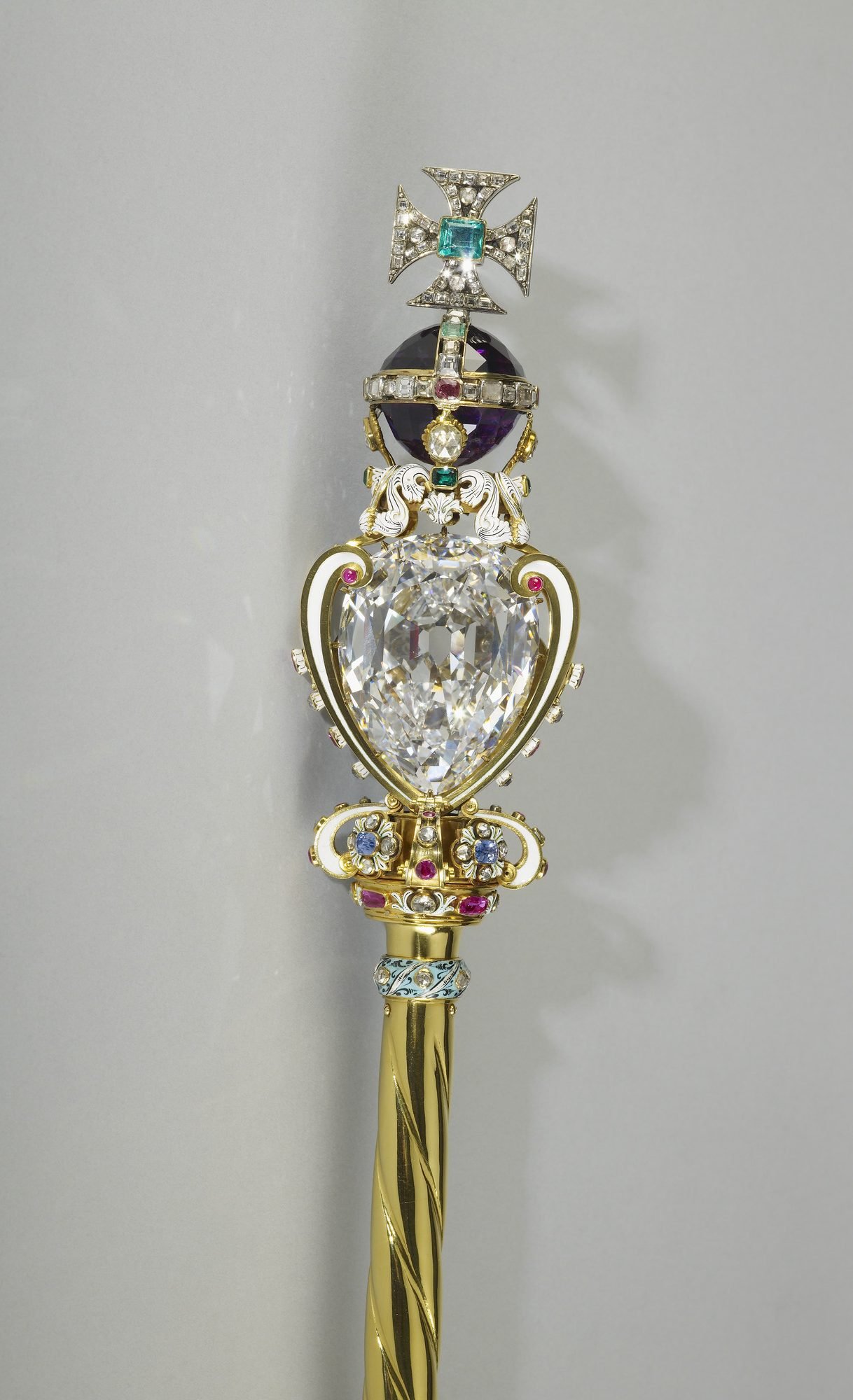
The huge Cullinan I diamond in the sceptre (royal collection trust)
Gazing upon Cullinan II in the Imperial State Crown, The Queen remarked: “I always wish I had been there when they smashed it into pieces”.
Touching the, frankly huge, diamond brooch she is wearing on her left shoulder, she comments: “These were the chips that were left.” The ‘chips’ are Cullinan numbers III and IV, weighing 94.4 carats and 63.3 carats respectively!
Pointing again to the Cullinan I in the crown and Cullinan III and IV in her broach, the Queen tells Bruce: “These have never seen each other since they were smashed”.
Watching footage of herself sitting in the Gold State Coach at Buckingham Palace, as she set off to Westminster in the procession, Her Majesty tells Bruce it was a “very long day”, continuing: “When you’re taking part in something you don’t actually see it.”
The Queen’s only children at that time were Prince Charles and Princess Anne who remained behind at Buckingham Palace (Charles did attend the Coronation but for only 10 minutes, due to his young age).
Putting perhaps a slightly daft question, Bruce asks the Monarch if she can remember what they did during the day when they were left behind. Demonstrating that she is no sufferer of fools, The Queen dismisses the question with: “No idea, I wasn’t there! I have no idea what they did”, although we learnt there were other children at the palace, presumably those of relatives and friends attending the coronation.
Explaining about her journey in the Gold State Coach, created for George III’s coronation in 1761, The Queen told Bruce: “Horrible! It’s not meant for travelling in at all. It’s only sprung on leather, it’s not very comfortable.”

(L-R) Lady Moyra Campbell, Lady Jane Vane-Tempest-Stewart, Lady Anne Coke, Lady Jane Heathcote-Drummond-Willoughby, Lady Rosemary Spencer-Churchill, Lady Mary Ballie-Hamilton, Lady Mary Gascoyne-Cecil, (maids of honour) with The Queen – (C) Alamy – Photographer: Cecil Beaton
Going on to explain another potential hazard for the day, we were told that The Queen’s Coronation dress was embroidered of silk with pearls and gold and silver bullion thread. Referring to the weight this must have made the dress the Sovereign told us: “I remember one moment when I was going against a pile in the carpet and I couldn’t move at all… They hadn’t thought of that.”
The holiest part of the Coronation ceremony is the anointing where The Queen was stripped of all her regalia and dressed in a simple gown. Watching this footage The Queen said: “The only thing they couldn’t remove were the earrings, they had enough trouble with the necklace.”
Watching the participants during this solemn section of the occasion the Monarch remarks: “There’s an awful lot of walking backwards isn’t there?” Bruce observes that it is like a ballet – everyone knows where to go. “Well they jolly well should have done,” Her Majesty retorted, “after the number of rehearsals they had!”
The Dean of Westminster revealed that they still have the flask of anointing oil used at the 1953 coronation, and its ingredients list – sesame and olive oil, perfumed with roses, orange flowers, jasmine, musk civet and amber grease.
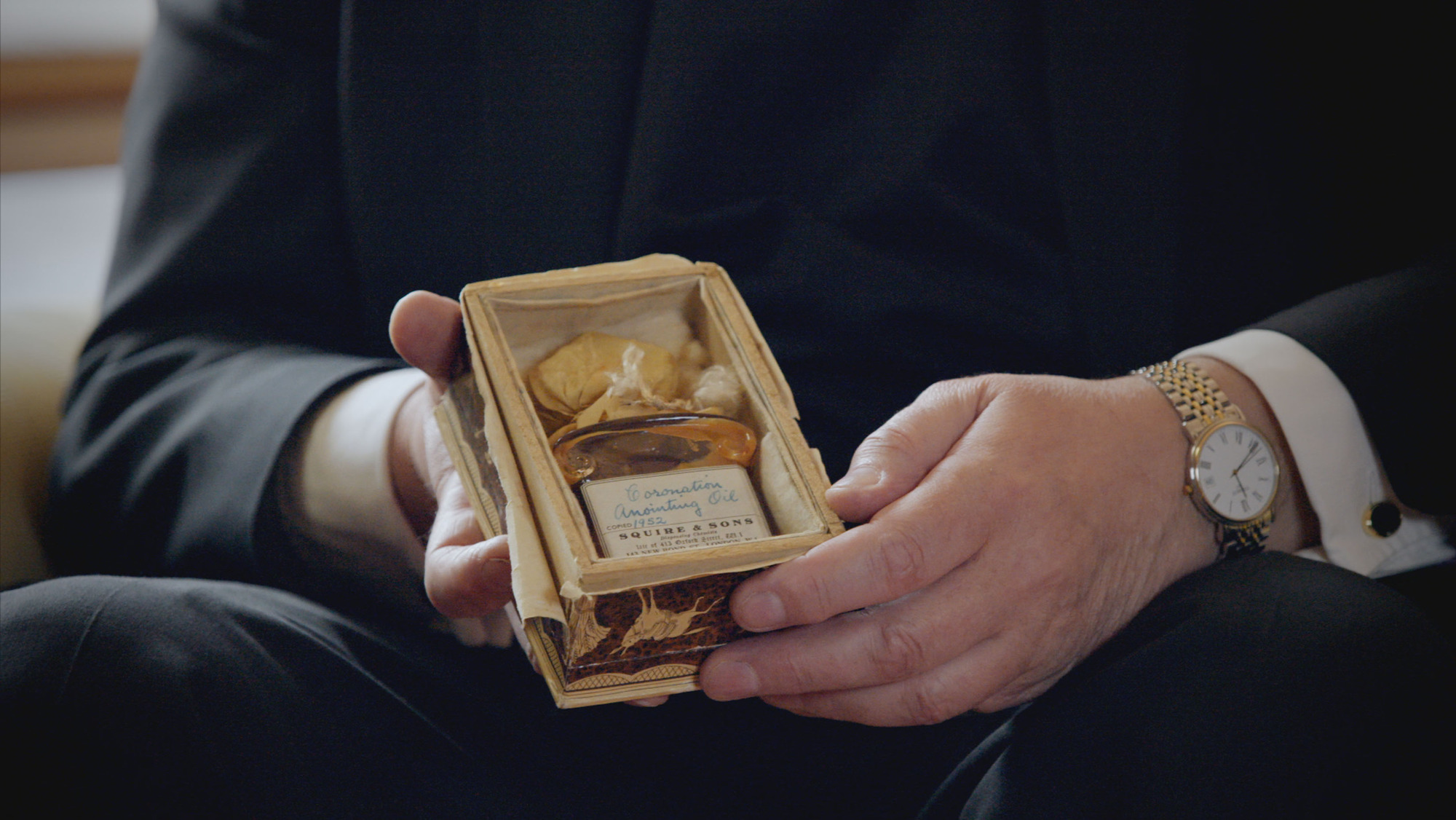
Dr John Hall, Dean of Westminster, holding the Coronation oil from 1953 (C) Atlantic Productions
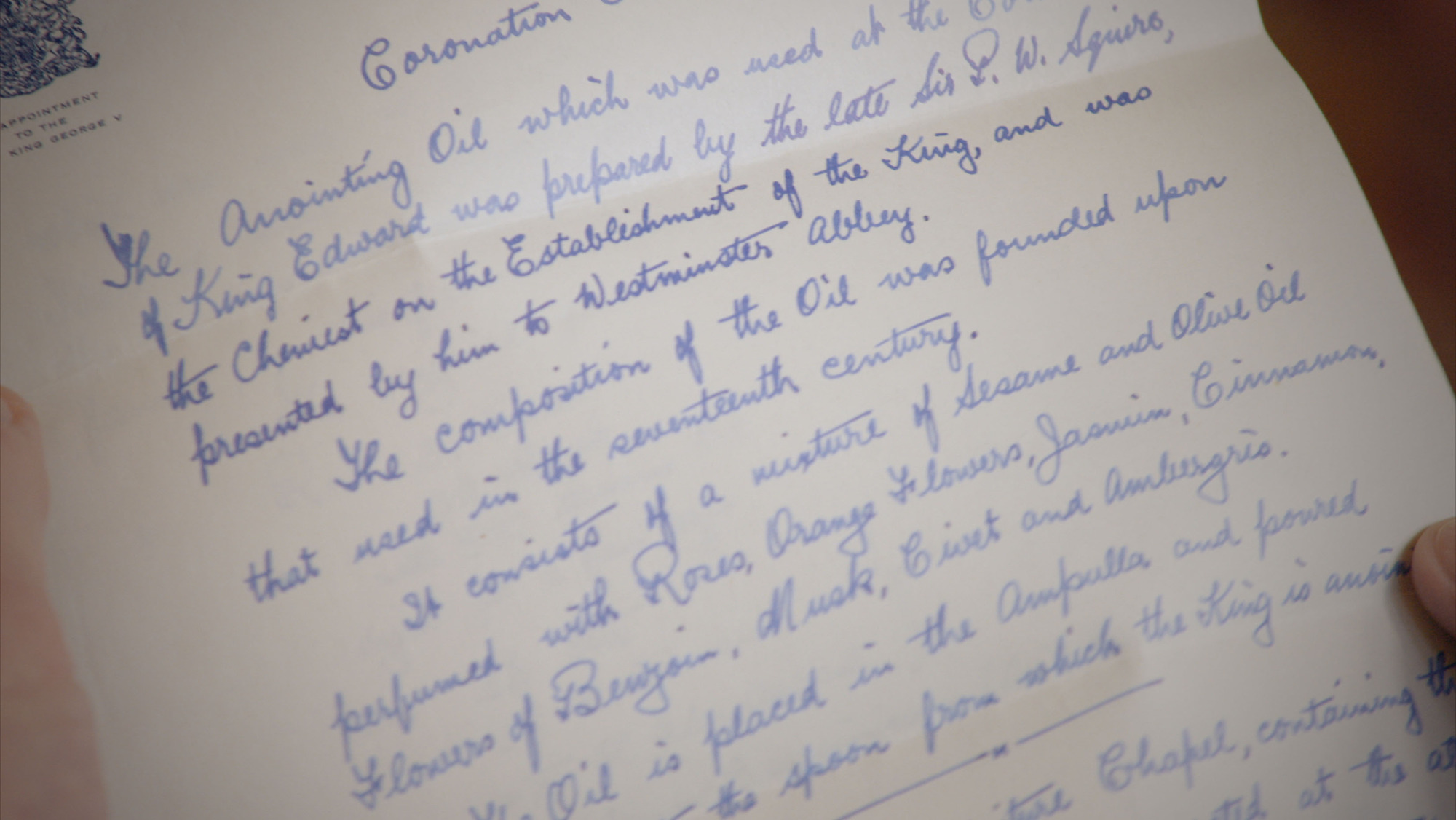
A note containing details of the ingredients of the Coronation Oil used in 1953 (C) Atlantic Productions
The programme concluded with Her Majesty reflecting on the events of 65 years ago: “I suppose it’s the sort of beginning of one’s life as Sovereign. It’s a sort of pageant of chivalry and old fashioned way of doing things I think really, but it’s quite interesting to have it done again. I mean I’ve seen one coronation and been the recipient of other which is pretty remarkable.”
It is indeed a remarkable feat – but then so is this Monarch: the longest-reigning in history. The most-photographed person in the world and yet we seldom get to see behind the front of official duty and hear personal thoughts and reflections.
Last night’s programme is a historical piece that generations will be able to look back at and see, perhaps, the last of the truly great monarchs of Great Britain, in a way that wasn’t possible with her ancestors. And when they do, they will see that the brightest shine in among all the diamonds and jewels was the gleam in The Queen’s eye, as she reflected upon the 1,000 years of almost constant Monarchy this country has enjoyed and the vital contribution she has made to it.

